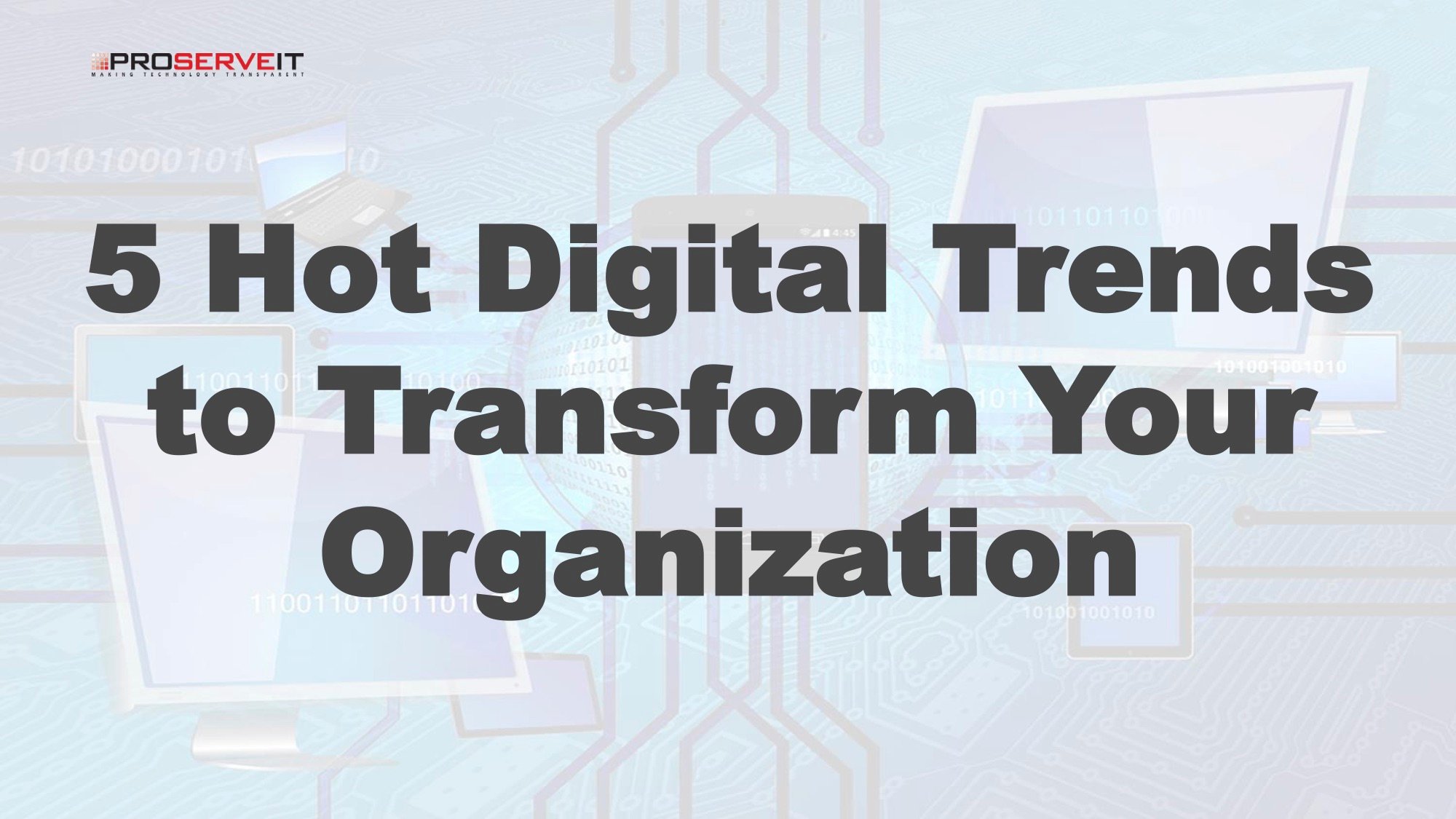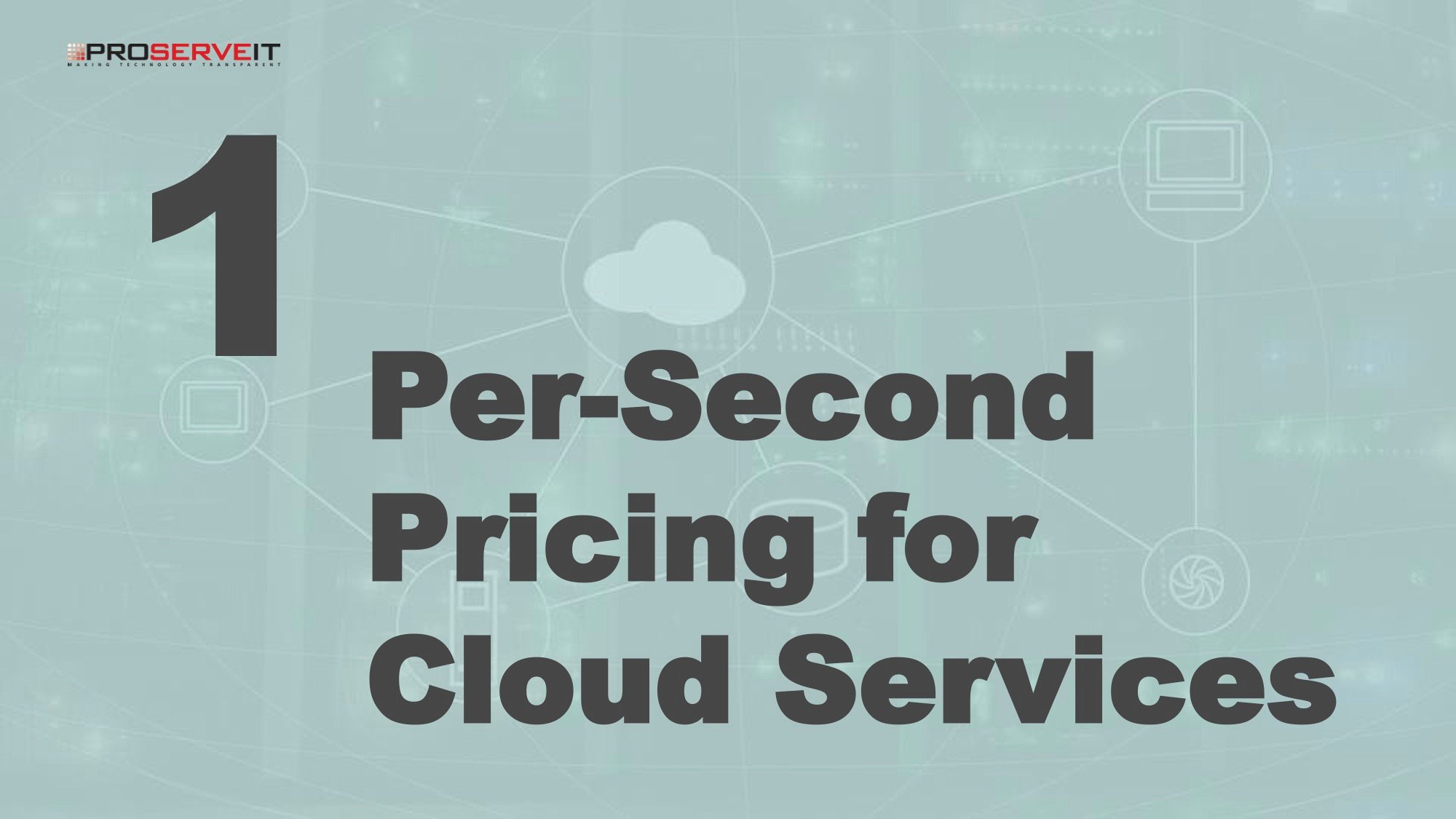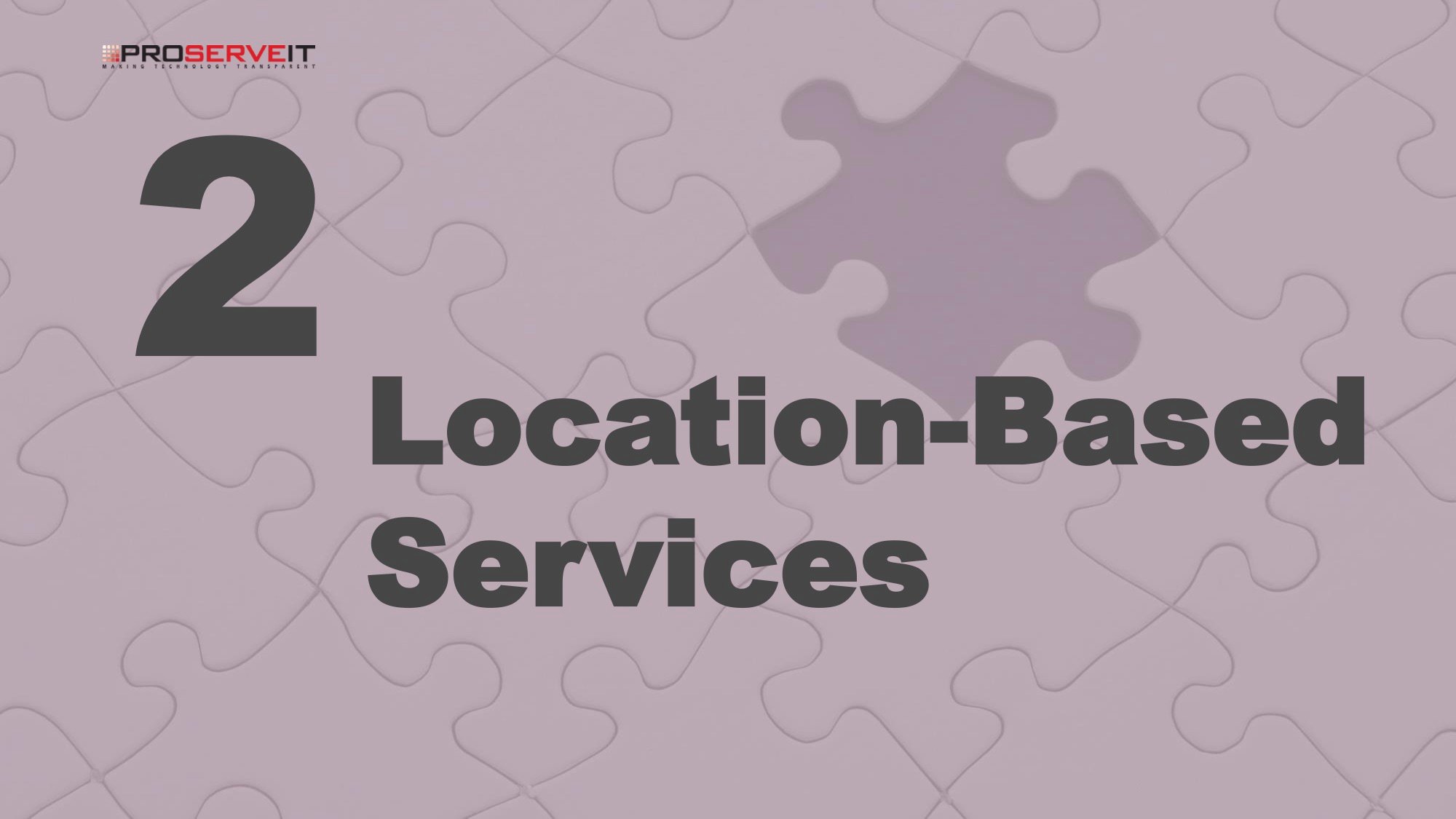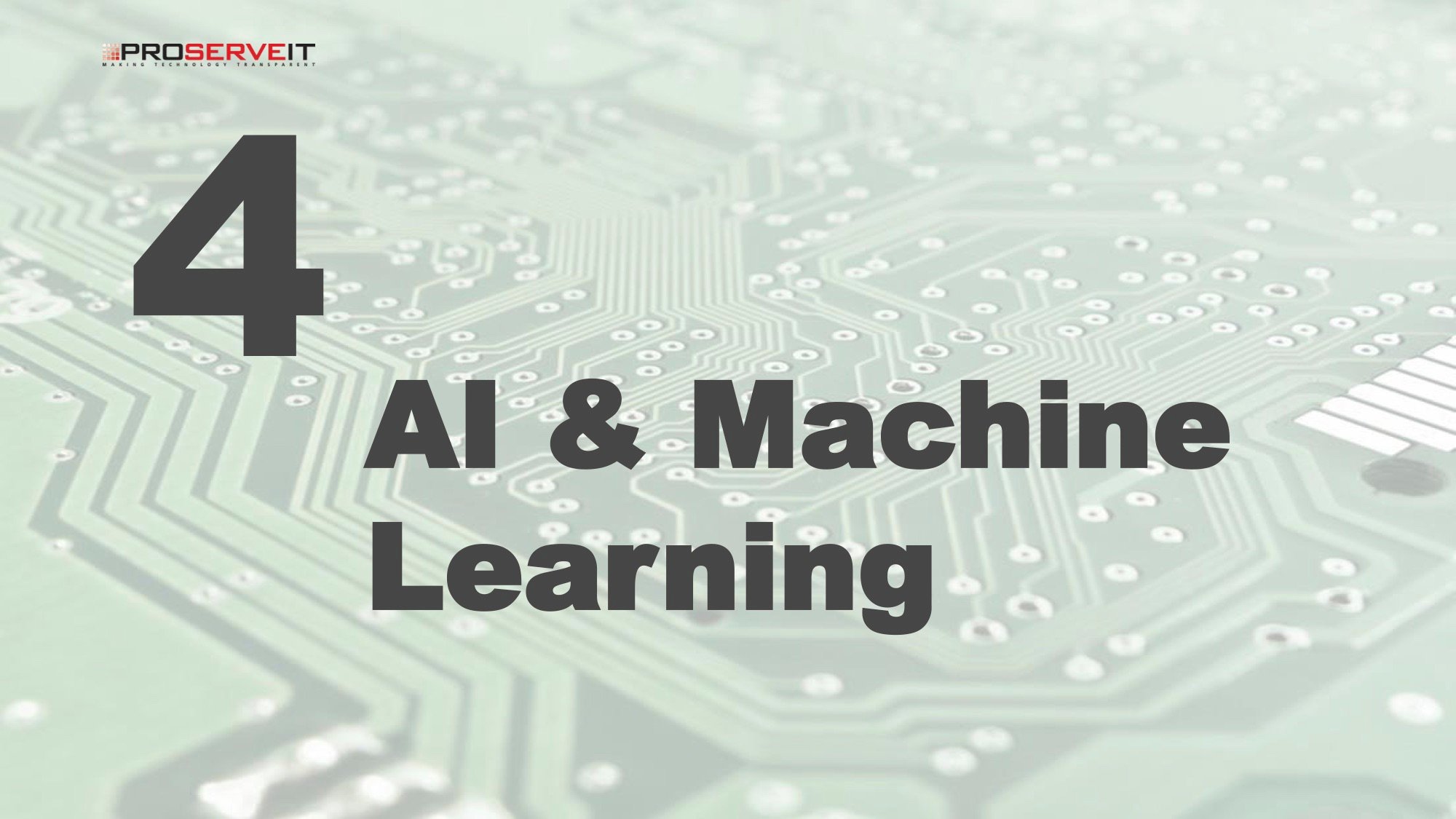
Are you taking advantage of the current digital trends to give your organization a modern makeover? It’s no secret that, in today’s world, digital transformation is becoming a necessity, not a nicety. Those organizations that aren’t embracing digital transformation trends are being left behind. And the research is backing this up – in a recent study, 64 percent of respondents said that digital transformation is an essential part of driving profits.
In this blog, we’ll look at 5 hot digital trends in 2018. Need some help determining how these can be applied to your business? Start a conversation with our experts today!
Digital Trend 1: Per-Second Pricing for Cloud Services

A recent Forbes article mentioned that many companies, regardless of the sector they’re in, get caught up in the up-front cost of software, and often fail to take into account the total cost of ownership (such as the additional hardware, support, or other costs). Cloud services, on the other hand, allow you to pay only for the resources that you use, which lets you take advantage of scalability and reliability – two things that a lot of companies can’t afford internally.
Cloud has always been billed on a per-usage basis – this isn’t new, by any means. But, in 2018, we’re going to see a major shift to per-second pricing (coined “atomic pricing” by some). This means that organizations, like yours, will be able to purchase infrastructure on a per-second basis, maximizing your investment and minimizing waste. Per-second pricing is being discussed, if not already available, through Cloud providers like Microsoft Azure, Amazon Web Services, and Google.
Keep an eye out for this trend to continue to flourish throughout the rest of 2018 and beyond.
Digital Trend 2: Location-Based Services

The global ‘Pokémon Go’ phenomenon that happened back in 2016 (and, in part, continues to this day) was a great moment for proving that location-based services and geolocation technology could help organizations not only find out where their customers were, but also why they visited the areas they did.
It doesn’t matter what you felt about the Pokémon Go game – love it or hate it, there’s no doubt it’s changed the way that organizations are looking at reaching out to customers. And, using the success of such location-based games, we’re sure to see location-based services as a prevalent digital trend in 2018. In fact, we’re already seeing this trend making its way into the public sphere, with major shopping malls and airports already using comprehensive indoor maps that are available on a consumer’s mobile device while they shop or travel.
Transforming the in-person experience is something that many companies are attempting to embrace today. Wouldn’t it be great if you could go to a hospital and be told which parking lots have available parking spaces, then be shown a map to the specific area of the hospital you needed to go? Thanks to location-based services and geolocation, this is becoming more of a reality everyday.
Digital Trend 3: Identity Management

A big buzz word in today’s market is “as-a-Service”, with Platform-as-a-Service, Software-as-a-Service, and Infrastructure-as-a-Service being the main words that are mentioned on a regular basis. However, with the influx of digital services like Google accounts and Facebook, and other online personas that need to be managed, there’s a possibility that Identity-as-a-Service will become popular in the next several months.
It’s therefore quite probable that we’ll see Identity-as-a-Service (managing your online identity) as a very real digital trend for the rest of 2018 and beyond. Users will have a single identity management account that will let them consume services on a regular basis without constantly going through authentication practices (like signing in to each site individually).
If your organization requires your employees to sign on to several different digital services, it may be a good option to start looking into identity management as a place where you can save time and increase productivity in your working environment.
Digital Trend 4: AI & Machine Learning

What do you think of when you hear the words “Artificial Intelligence” or “Machine Learning”? Do they conjure up unsettling things for you, like the Terminator? In reality, AI and Machine Learning are a lot more predominant than many people know (and far less scary!). Some everyday examples of AI that you may be familiar with include ride sharing apps (Uber, anyone?), spam filters on your email, and depositing cheques via mobile phone.
In reality, AI and Machine Learning offer great opportunities for businesses to boost productivity, and augment their decision-making capabilities. By 2018, Constellation Research expects that the predominant area of experimentation and investment in technology will be in Artificial Intelligence (AI). In fact, with a growing number of AI development kits available (like Microsoft Azure, Google’s TensorFlow, and Caffe), an increasing number of organizations are already experimenting with how AI can enhance or add to their digital transformation.
When implementing AI and Machine Learning in your organization, it can be as simple as automating one of your processes. For example, setting up a workflow in SharePoint, or implementing a Business Intelligence solution (like Power BI) to help you make better business decisions. Both of these scenarios are using AI and Machine Learning to power your data and help you work smarter, not harder.
Digital Trend 5: Interactive Voice

“Hey, Cortana! Remind me of my meeting in half an hour.”
“Hey, Alexa. How do I make a good spaghetti sauce?”
“Hey, Google. What’s 64 divided by 8?”
There are several voice interaction technologies that are competing on the market today, and all of them are designed to make things easier through interactive discussions.
Although not a new concept (it was designed around 20 years ago to help customers navigate self-serve options to cut down on the number of calls that call centre agents were receiving), Interactive Voice is making a major comeback, disrupting the traditional visual user interfaces that we’re used to.
One interesting example of using Interactive Voice is in the healthcare industry, where healthcare content publishers, like the Mayo Clinic, have connected their content to Alexa. This makes it possible for patients to ask Alexa a range of questions, like the side effects to certain drugs, or self-care first aid instructions like how to treat a fever or help for a burn.
Simply put, the introduction of Artificial Intelligence into Interactive Voice conversations helps the experience seem more ‘real’ and is the key to reinventing Interactive Voice.



